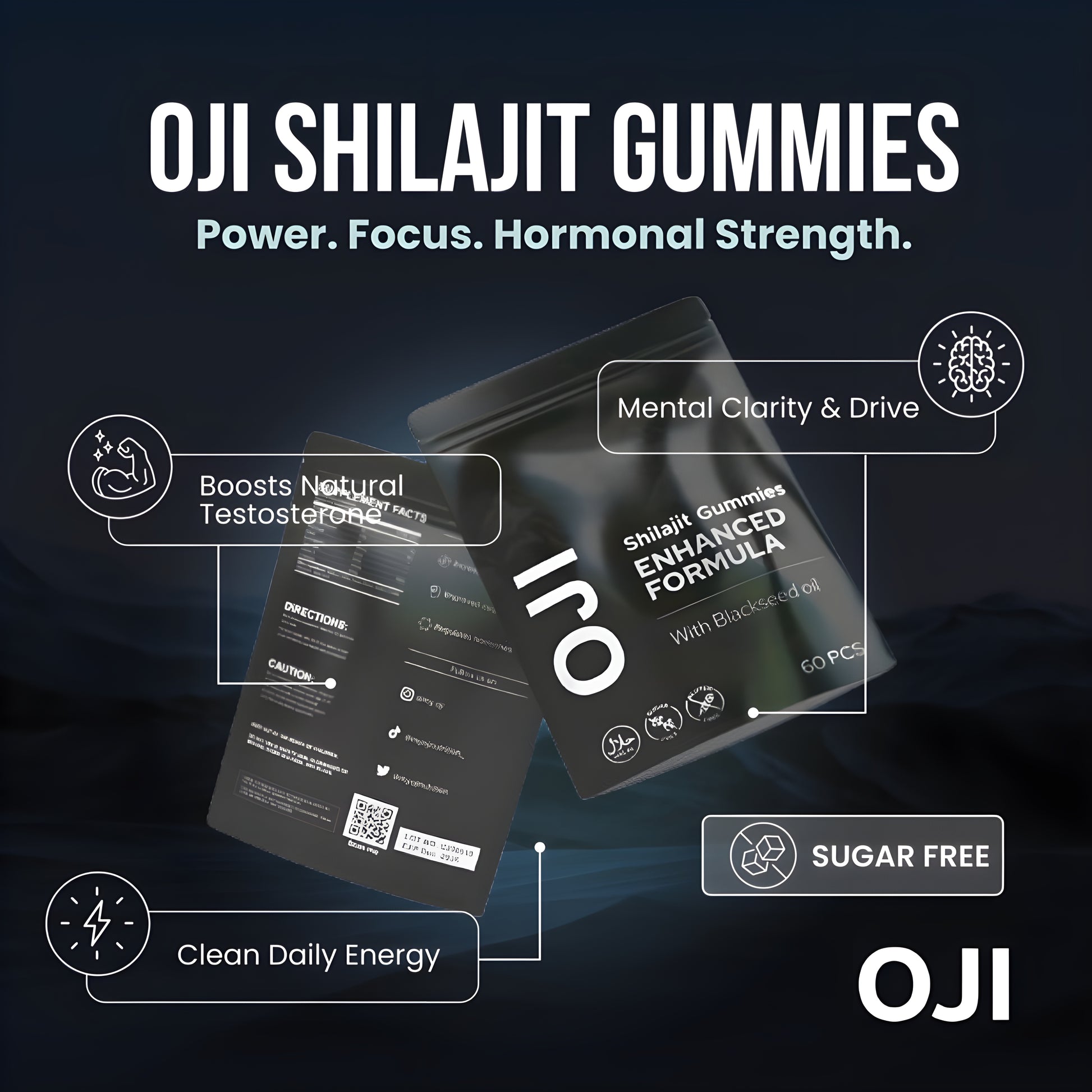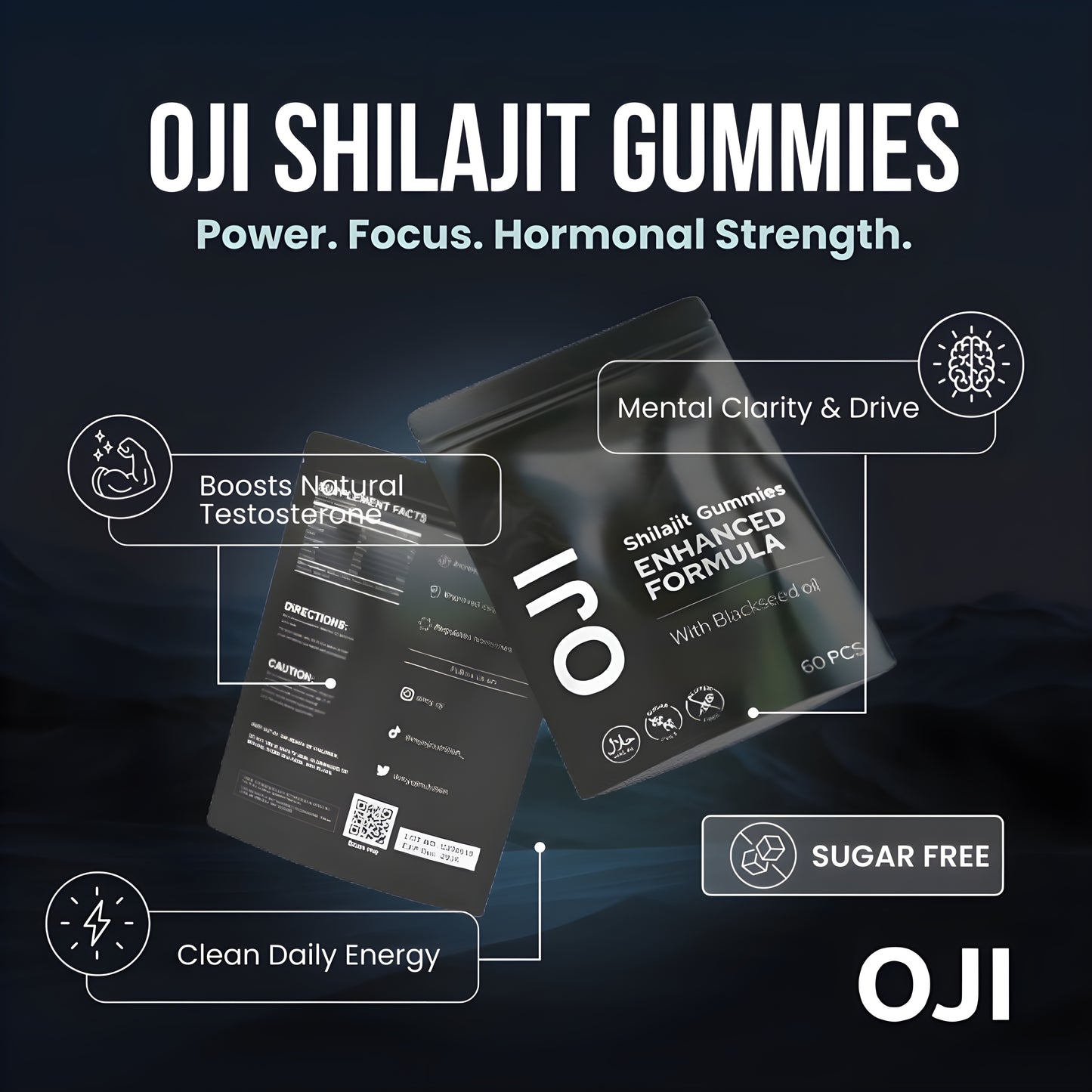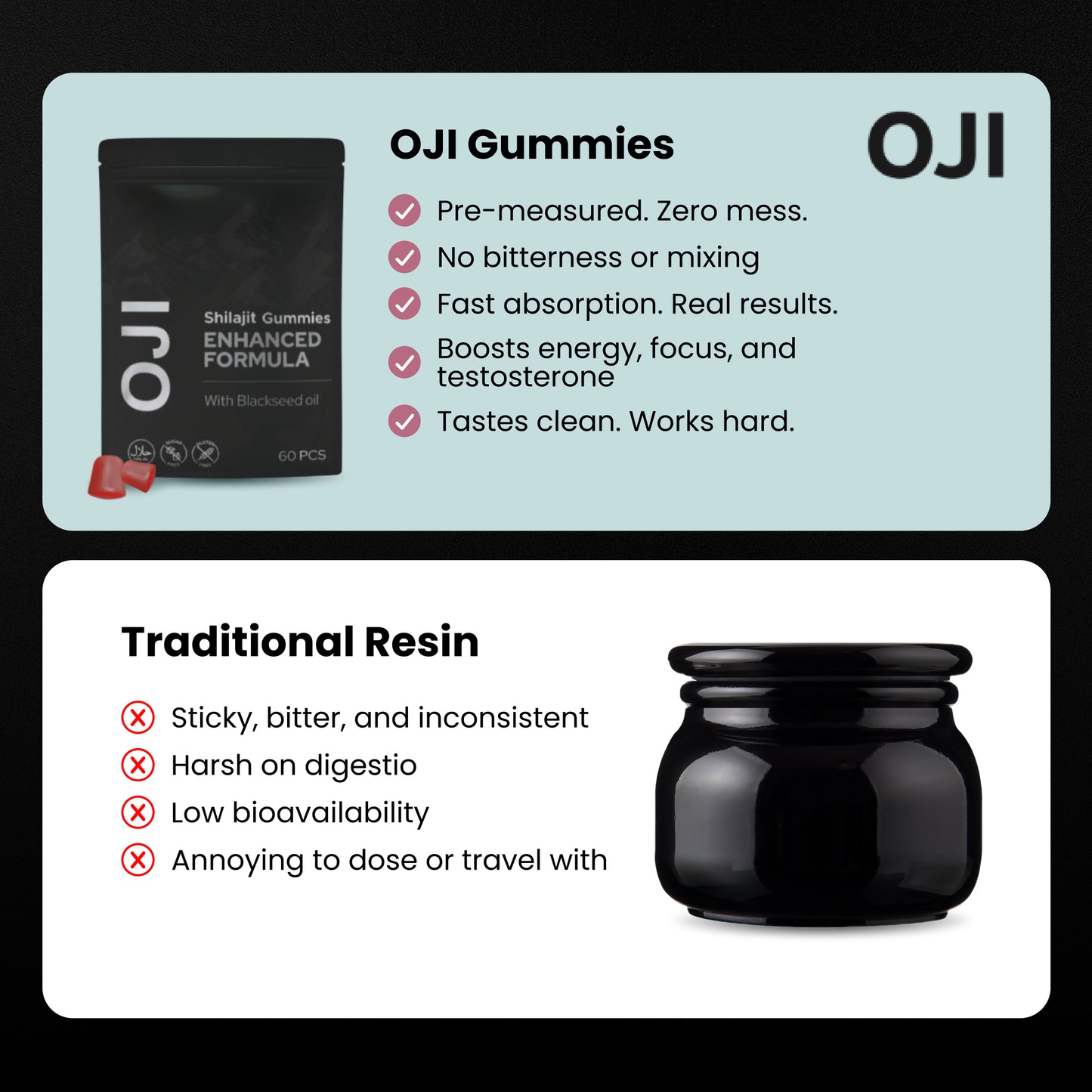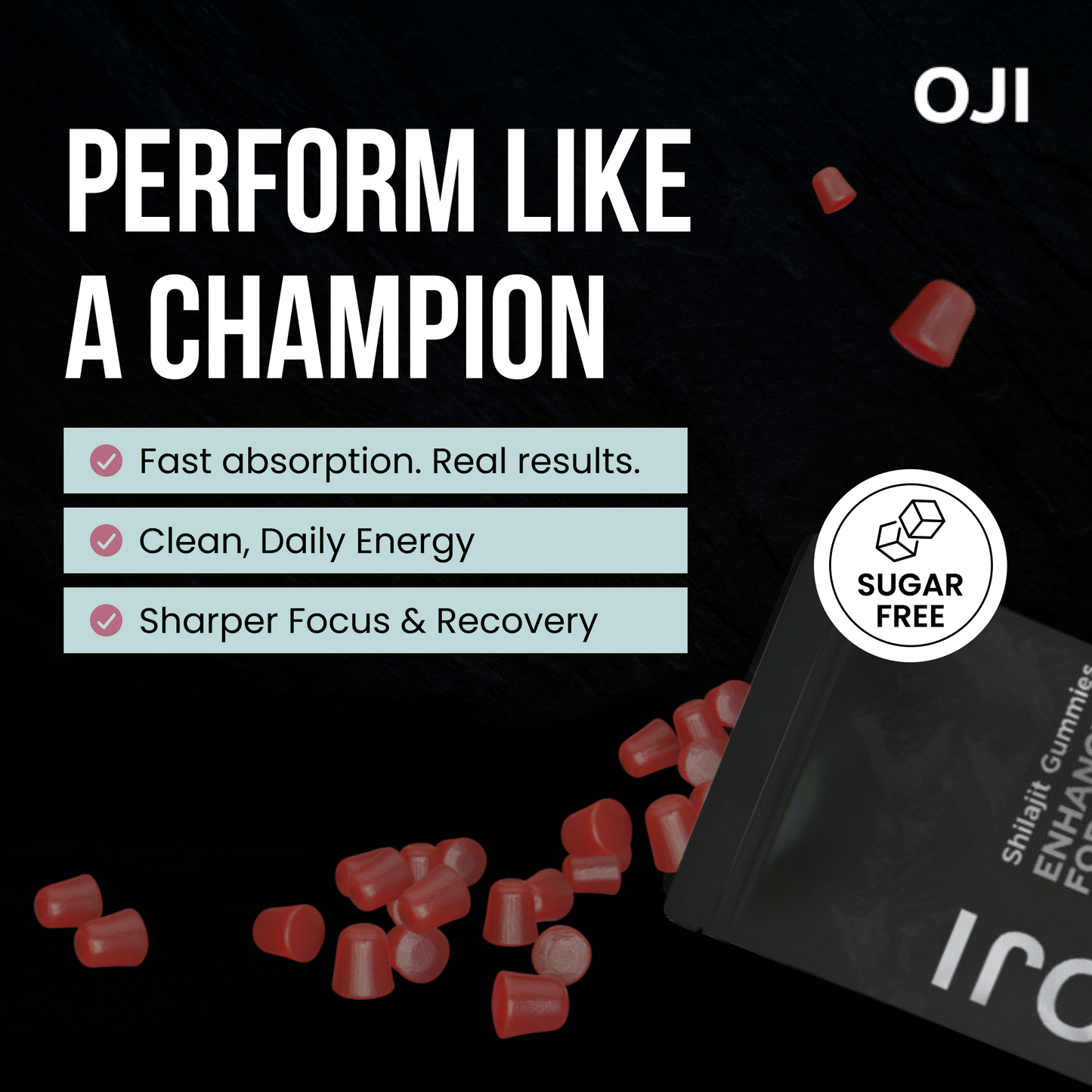If you want to sidestep burnout, the first step is learning to spot it coming. It isn't just about feeling tired; it's a slow-burn erosion of your energy, your passion for your work, and your overall effectiveness. The good news is, by taking proactive steps, you can spot the signs and take immediate action.
Recognising the Early Signs of Burnout
Burnout doesn’t just show up one day, bags packed. It’s a quiet houseguest that creeps in, often disguising itself as everyday stress.
Learning how to avoid burnout really comes down to knowing the difference between a tough week and the first tremors of a much deeper issue. Think of it like this: it’s one thing to feel drained after a massive project, but it's another thing entirely to feel perpetually exhausted before your day has even properly started.
And this isn't a rare problem. The issue has become incredibly widespread. Recent data from the UK workforce is pretty stark: a staggering 79% of employees have felt the sting of burnout, with 35% describing their levels as high or extreme. That's a worrying jump from the year before, showing just how common this deep mental and emotional exhaustion has become. You can explore more about these workplace trends and what they really mean for people on the ground.
The Three Core Components of Burnout
To really get a handle on burnout, you need to look beyond just feeling tired. It's officially recognised as a syndrome with three distinct parts. Understanding these is your first proper step towards preventing it.
- Emotional Exhaustion: This is the big one. It's that deep, persistent fatigue that a good night's sleep just doesn't seem to touch. You might feel mentally heavy, physically drained, and just completely overextended by your daily life.
- Depersonalisation or Cynicism: This is when you start to feel detached and negative about your job. The work that once gave you a buzz now feels pointless. You might find yourself getting irritable with colleagues or cynical about your entire field. It’s a defence mechanism, but one that cuts you off from your sense of purpose.
- Reduced Personal Accomplishment: This is that nagging voice in your head telling you you're not effective anymore. Even when you're working flat out, you feel like you’re not making a real difference. It chips away at your confidence and professional self-worth.
This image really helps to break down how these three pillars of burnout work together.
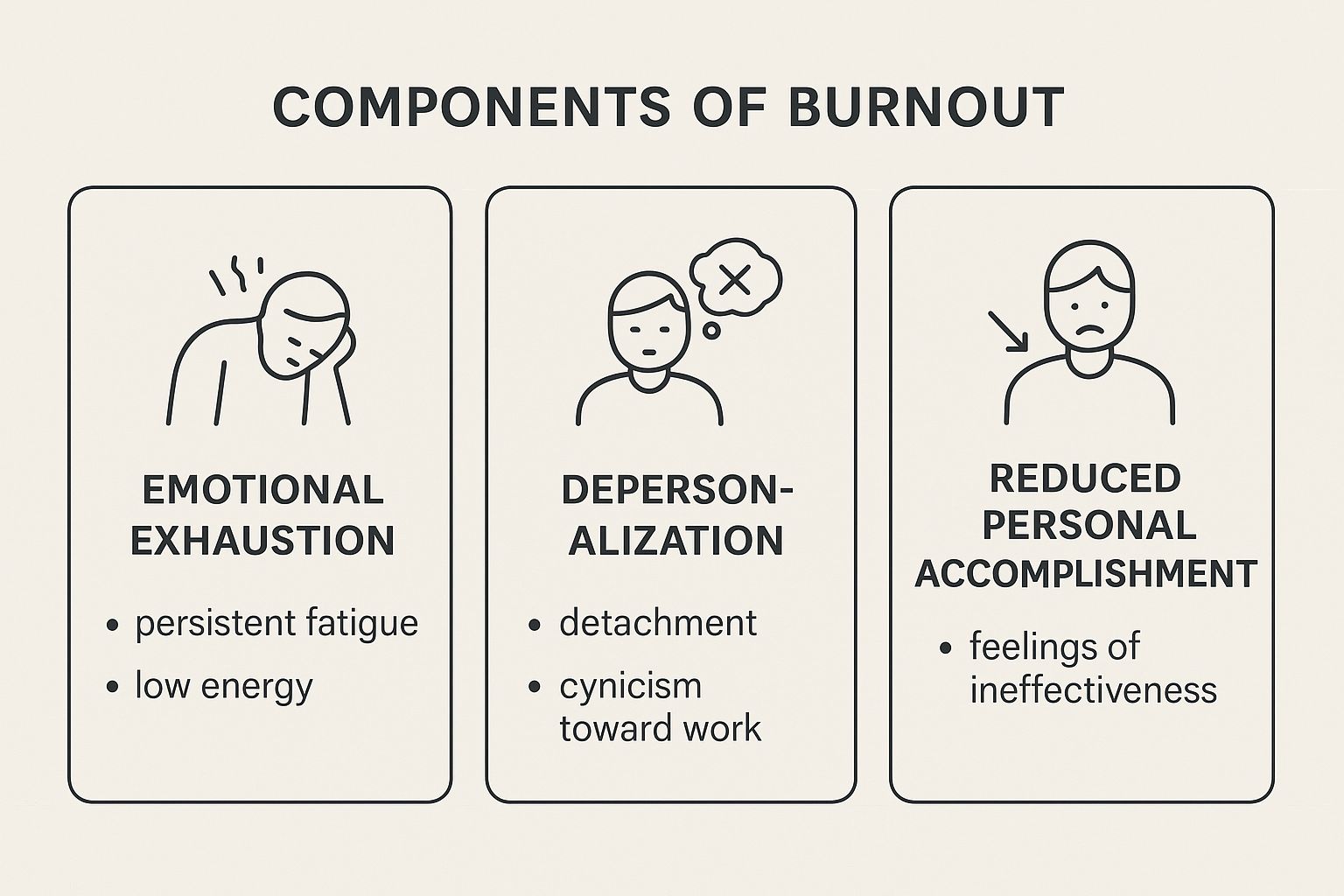
Seeing it laid out like this makes it clear that burnout isn’t just one thing—it’s a complex state that comes from a mix of relentless exhaustion, growing detachment, and a fading sense of effectiveness.
Burnout Symptoms vs Normal Stress
It's easy to mix up a stressful period with the early stages of burnout. This quick table helps to highlight the key differences.
| Indicator | Normal Stress | Burnout Sign |
|---|---|---|
| Energy Levels | Feeling tired, but you bounce back after rest | Persistent, deep exhaustion that sleep doesn't fix |
| Emotional State | Feels manageable, often linked to specific tasks or deadlines | Feeling emotionally blunted, cynical, or detached from your work |
| Motivation | Still engaged, even if you feel under pressure | Apathy and a loss of interest in things you used to enjoy |
| Sense of Achievement | You still feel a sense of accomplishment after a hard day's work | Feeling ineffective and like your efforts don't make a difference |
| Physical Symptoms | Occasional headaches or tension | Chronic headaches, digestive issues, and disrupted sleep patterns |
Recognising where you fall on this spectrum can be a real eye-opener.
Spotting the Red Flags in Your Daily Life
So, how do these components actually show up day-to-day? It often starts with tiny shifts in your routine and mood. Maybe that Sunday evening dread has ramped up to an intensity you haven't felt before. Or perhaps you find yourself zoning out in meetings you used to lead the charge in.
Actionable Step: At the end of each workday, take two minutes to rate your energy and mood on a scale of 1-10. If you see a consistent downward trend for more than a week, it's a clear signal to act.
Another clear sign is a change in your work habits. You might find yourself procrastinating more, struggling to focus on anything complex, or making silly mistakes that aren't like you at all.
Physically, you could start getting more headaches, have an upset stomach more often, or find your sleep is all over the place. These aren't just random, isolated events; they are data points telling you that your internal battery is critically low. Spotting this pattern early is your single most powerful tool for prevention.
Building Your Practical Burnout Prevention Toolkit
Spotting the warning signs is one thing, but preventing burnout requires a proactive, real-world approach. This isn't about fluffy advice. It's about building a solid toolkit you can rely on day in, day out—one that acts as a real buffer against exhaustion.
This section provides actionable steps in three crucial areas: setting firm boundaries, finding restorative recovery activities, and reconnecting with your purpose. Think of these as your core defences for protecting your energy.
Master the Art of Setting Boundaries
Boundaries are your single most powerful defence against burnout. It’s not about being difficult; it's about safeguarding your time and mental energy so you can show up at your best. Without clear boundaries, you’re always ‘on,’ and that’s a one-way ticket to burnout.
Saying 'no' can feel awkward. The key is to be polite, clear, and firm.
Here are specific phrases you can use to say 'no' without burning bridges:
- For a new project request: "Thanks for thinking of me. My focus is entirely on [Project A] right now to meet our deadline. I don't have the capacity to give this new task the attention it deserves."
- For a non-urgent late-night request: "I can definitely tackle that first thing tomorrow with a fresh perspective. I'm logging off at 6 pm today."
- For a colleague trying to delegate their work: "I understand you're swamped, but I have to stay focused on my own deadlines. I'm happy to help you brainstorm a quick solution if you're stuck."
Actionable Step: At the start of your day, define your "hard stop" time and write it down. When someone asks for something that will push you past it, refer to your commitment: "I've committed to finishing at 5:30 today, but I can address this first thing in the morning."
Embrace Active Recovery Over Passive Rest
There’s a world of difference between collapsing on the sofa to doomscroll and doing something that genuinely restores you. Passive rest, like binge-watching a series, often leaves you feeling just as drained. Active recovery is what actually fills your tank back up.
Actionable Step: Schedule one 'active recovery' session into your calendar this week. It doesn't have to be long. Block out 30 minutes for an activity that engages you in a low-stakes, enjoyable way, like gardening, drawing, playing an instrument, or going for a walk without your phone.
Think about things that give you energy instead of just consuming it. This could be anything from gardening or painting to joining a local sports team or learning a new skill. The idea is to build an identity and a sense of achievement that has nothing to do with your job title. That balance is absolutely essential for long-term resilience.
Reconnect With Your 'Why'
When cynicism sets in, it's usually a sign that you've lost connection to your purpose. The daily grind buries the big picture, making your work feel pointless. Reconnecting with your 'why' is a powerful antidote.
Actionable Step: Take 10 minutes right now. Open a notebook and answer these three questions:
- What part of my job did I used to find genuinely exciting?
- Who benefits from the work I do? (Think of a specific person or group).
- What is one small task I can do this week that aligns with that original excitement?
This simple exercise can reignite your motivation by reminding you of the real value you bring. When you have a sense of purpose, even the toughest tasks feel more manageable.
Navigating Workplace Culture and Communication

While personal resilience is a great first step, it’s only half the battle. The environment you work in plays a massive part in whether you thrive or just survive. Learning how to avoid burnout often means looking beyond your own to-do list and at the culture itself.
It’s about taking action on the communication habits and expectations that pile on chronic stress. Facing these issues can feel intimidating, but you can't outrun a toxic culture with good habits alone. The key is to start productive conversations and advocate for what you need.
Starting the Conversation with Your Manager
Talking to your boss about your workload can be tricky. Mental Health UK’s 2025 Burnout Report recently highlighted that a staggering 91% of UK adults felt high or extreme stress in the last year, with younger employees feeling the least comfortable opening up about it at work.
Instead of just saying, "I'm overwhelmed," frame the chat around solutions and shared goals.
- Be Specific: Come to the meeting with clear examples. Try this script: "My focus is currently split between Project A and Project B. To ensure I deliver high-quality work, could we decide which one is the top priority for this week?"
- Focus on Outcomes: Show them how a more manageable workload is a win for the company. Try this script: "I’m confident I can get a much better result on the Q3 report if I can dedicate my full attention to it. This would mean we need to pause my work on the internal newsletter for now. How does that sound?"
This approach changes the dynamic from complaining to collaborative problem-solving.
Advocating for Reasonable Adjustments
Sometimes, small changes make the biggest difference. These 'reasonable adjustments' are tweaks to your role or environment that help you manage your health and stay effective.
Advocating for yourself isn't asking for special treatment. It's about securing the conditions you need to perform at your best—a vital step in stopping burnout before it takes hold.
Think about what's causing you the most stress and propose a specific solution.
| If You're Feeling... | A Reasonable Adjustment to Propose Is... |
|---|---|
| Constantly Interrupted | "Could I block out a 'deep work' session from 9-11 am where I'm offline on Teams to focus on the report?" |
| Overwhelmed by Vague Goals | "To ensure we're aligned, could we start a weekly 15-minute check-in to set clear targets for the week?" |
| Drained by the Commute | "I'd like to propose a trial period of working from home on Wednesdays to increase my focus on project work." |
| Exhausted by a Rigid Schedule | "Would it be possible to try a flexible start time, shifting my day from 8-4 instead of 9-5, to see if it boosts my morning productivity?" |
Presenting these as a trial run—"Could we try this for a month?"—makes it a much easier 'yes' for your manager. As you navigate these changes, exploring techniques for natural stress relief can provide extra support.
Actionable Lifestyle Habits for Lasting Resilience

What you do outside of work directly impacts your ability to handle pressure. The small, consistent habits you build are your strongest defence against the chronic stress that leads to burnout. These aren't grand gestures; they're high-impact adjustments that build resilience from the ground up.
Learning how to avoid burnout means taking concrete action on the quality of your lifestyle, not just white-knuckling your way through the day.
Build a Foundation with Restorative Sleep
True resilience starts with genuine rest. If you wake up shattered, your sleep hygiene needs an overhaul. A bad night’s sleep depletes your emotional regulation and problem-solving skills, making you more vulnerable to stress.
Actionable Step: For the next seven days, set a "go to bed" alarm for the same time each night. Also, set a second alarm for one hour before that to signal it's time to put all screens away. This one change stabilizes your body's internal clock and improves sleep quality.
Your bedroom should be a sanctuary for sleep, not an extension of your office. The blue light from phones and laptops disrupts melatonin production, the hormone that tells your brain it's time to wind down.
Fuel Your Brain and Body Intelligently
The food you eat is either a source of sustained energy or a cause of energy slumps. Processed foods and sugary snacks cause blood sugar spikes and crashes, leaving you irritable and unfocused. Nutrient-dense foods, however, provide the building blocks your brain needs to manage stress.
Actionable Step: This week, pick one meal to prep ahead of time. Start small by preparing three days' worth of grab-and-go breakfasts, like overnight oats, or chopping vegetables for quick weeknight stir-fries. This removes decision fatigue and ensures you have healthy options ready. When you need an extra lift, you can explore our guide on how to feel more energetic through natural means.
Weave in Moments of Movement and Mindfulness
You don't need a one-hour gym session to get the benefits of movement. The key is consistent, small bursts of activity that lower cortisol, the body’s main stress hormone.
Actionable Steps You Can Take Today:
- The "Walking Commute": If you work from home, walk around the block before you start and after you finish. This creates a mental separation between work and personal time.
- The 5-Minute Reset: Set a recurring timer for every hour to stand up, stretch, or do a few squats. This breaks up sedentary time and re-energises your mind.
- Mindful Moments: While waiting for the kettle to boil, take three slow, deep breaths, focusing only on the air moving in and out. This resets your nervous system in under a minute.
These micro-habits add up, building a powerful buffer against daily pressures.
Carving Out Your Path to Recovery from Burnout

When you’re already in the thick of burnout, the focus must shift from prevention to active healing. This journey demands compassion, patience, and a clear plan to rebuild what you've lost.
This isn’t about just “coping.” It’s about fundamentally changing your relationship with work, stress, and your wellbeing. It starts with accepting where you are right now and taking the first brave step towards getting well.
Seek Professional Guidance and Support
The most important first step is admitting you can’t do this alone. Burnout is a serious state of exhaustion. Trying to "tough it out" will only make things worse. Reaching out for professional help is a sign of strength.
Actionable Step: Research one therapist or counsellor in your area today, or book an appointment with your GP. Tell them you're concerned about burnout and want to discuss a recovery plan. This single action can be the turning point.
True recovery begins the moment you give yourself permission to properly rest and heal. This isn't a luxury; it’s a non-negotiable part of the process. If you can, strategically taking time off work creates the breathing room you need to disconnect and start rebuilding.
For a more detailed look at this crucial first phase, our guide on how to recover from burnout offers more in-depth strategies.
Mindfully Re-Engage with Your Life
Once you’ve had a chance to rest, the next phase is about mindfully re-engaging without falling into old traps. This is not about jumping back in at 100%. It's a slow, deliberate return.
Actionable Step: For today, set one incredibly small, achievable goal. It could be as simple as "answer two important emails" or "go for a 20-minute walk." When you complete it, acknowledge the victory. This helps rebuild the sense of accomplishment that burnout wipes out.
Make a real effort to rediscover activities you enjoy outside of work. Burnout shrinks your identity down to your job title. Reconnecting with forgotten hobbies, spending quality time with loved ones, or learning something new helps you rebuild your sense of self. This is how you create a richer, more balanced life that’s more resilient to stress.
Burning Questions About Burnout
When you're trying to figure out how to handle burnout, a lot of questions can pop up. Let's tackle some of the most common ones to give you the clarity and confidence to move forward.
How Long Does Burnout Recovery Take?
There’s no magic number here. Recovery depends on the severity and duration of your burnout. For some, a few weeks of intentional rest and change can work wonders. For others, it may be a journey of several months.
The key is to be intentional. This isn't a sprint back to your old routine. It’s a gradual process of rest, building sustainable habits, and addressing the root cause of your exhaustion.
The most powerful thing you can do is simply acknowledge the problem. Recognising the exhaustion and cynicism in yourself and admitting you need a change is the true foundation for healing.
Can I Beat Burnout Without Quitting My Job?
Yes, in many situations, you can. Tackling burnout often starts with shifting your own mindset, behaviours, and daily habits. You have more power than you think.
By implementing the actionable steps we've discussed—setting boundaries, finding restorative recovery, and communicating your needs—you can significantly reduce your burnout risk. However, you must also be honest. If your work environment is relentlessly toxic and unwilling to change, finding a new role may be the necessary step for your long-term health.
What’s the Most Important First Step?
It all comes down to self-awareness. You can't fix a problem you won’t acknowledge. Take an honest inventory of where you are right now.
Are you noticing any of these classic warning signs?
- You're constantly exhausted, and sleep doesn't seem to help.
- You feel cynical or disconnected from your work.
- You have a nagging feeling that nothing you do makes a difference anymore.
The most important first step is to admit to yourself that this is more than "just stress" and decide to take one small action today to address it. That is the starting point for every single recovery strategy that follows.
Ready to build your resilience from the inside out? Oji Shilajit gummies are formulated with over 85 essential minerals and powerful adaptogens to help you manage stress, boost energy, and restore your natural vitality. Take the first step towards a more balanced life. Discover the benefits of Oji Shilajit today.


